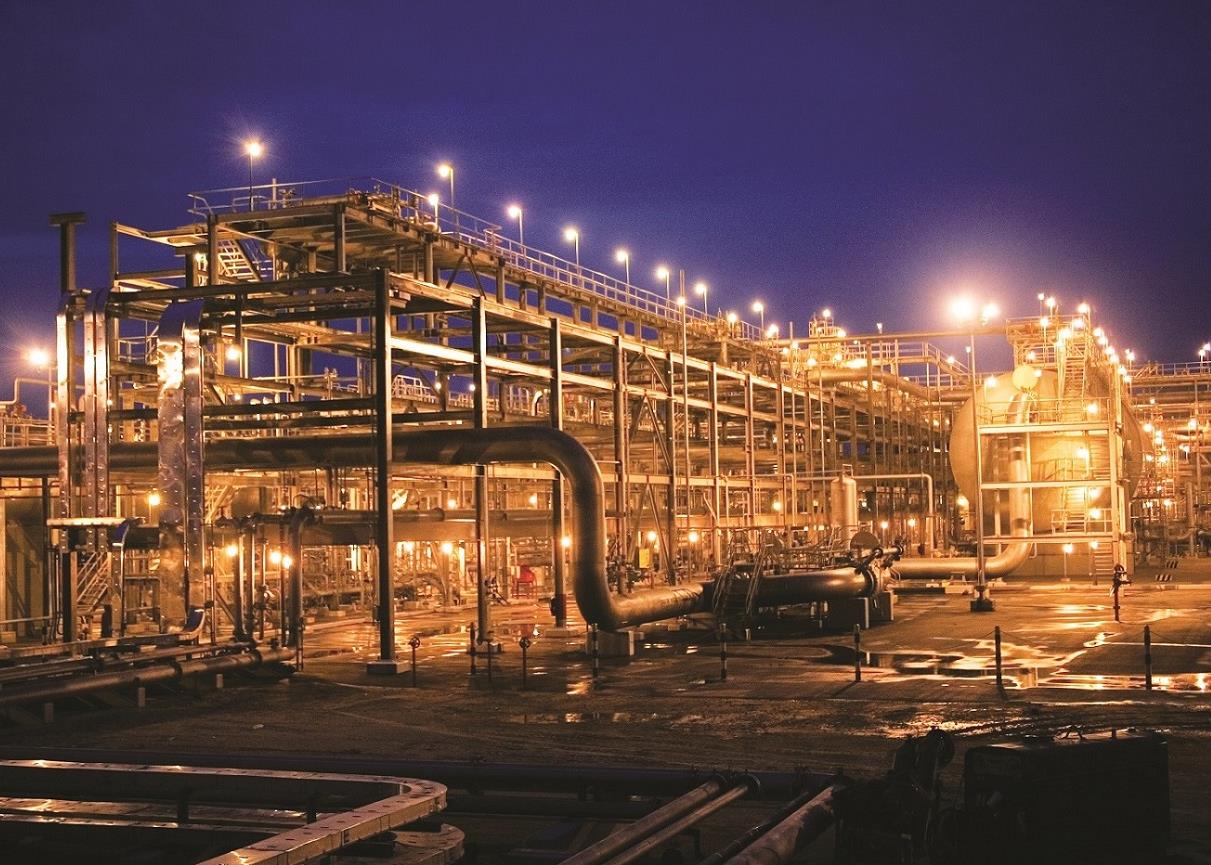

 Published in partnership with
Published in partnership with

One of the most apparent aspects of the Russia-Ukraine conflict is the rapid increase in energy prices brought on by Moscow’s reduction in exports to its European neighbours.
In 2021, Russia was the largest exporter of oil and gas to Europe, supplying some 40 per cent of its energy requirements, including 100 per cent of the total gas imports of five EU states, according to the International Energy Agency.
The continent’s three largest economies – Germany, Italy and France – depended on Russian gas for 46 per cent, 34 per cent and 18 per cent of their energy needs, respectively.
The imposition of sanctions on Russia in March 2022, followed by Moscow’s threat to suspend hydrocarbon exports, has resulted in a surge in energy prices.
Opec’s crude basket price increased from $78 a barrel at the start of the year to $122 in early June, while Henry Hub natural gas prices more than doubled from $3.8 a million British thermal units (BTUs) to $8.7 a million BTUs over the same period.
Expensive energy bills
This rapid energy inflation has been passed on to consumers through higher electricity bills.
In the UK, for instance, the energy regulator Ofgem estimates that the default tariff price cap will more than double from £1,300 ($1,529) in January to £3,580 in October, and reach a peak of £4,266 in the first three months of 2023, when demand will be highest during the colder winter months.
Replicated across the continent, this is likely to result in millions of households entering ‘fuel poverty’ as they struggle to pay their energy bills.
The Mena region is well-positioned to plug the shortfall in Russian gas exports as European governments scramble to source gas from new markets to reduce their dependence on Moscow
Reducing reliance on Russia
The subject was not surprisingly a central theme of debate at Siemens Energy’s Middle East & Africa Energy Week held in June, where attendees agreed on two main conclusions drawn from the crisis.
The first was that the Middle East and North Africa (Mena) is well-positioned to plug the shortfall in Russian gas exports as European governments scramble to source gas from new markets to reduce their dependence on Moscow.
The GCC alone globally exports almost exactly half of the 411 billion cubic metres of gas that Russia supplies to Europe annually. Most of this is in the form of long-term liquefied natural gas (LNG) contracts to east Asia, but there is some limited capacity available – primarily from Qatar – to fill part of the shortfall.
European nations have been quick to recognise this. For example, following a visit to the region by its Vice-Chancellor and Climate & Energy Minister Robert Habeck in March, Germany – Europe’s largest energy market – is now fast-tracking the construction of two LNG import terminals and has entered a long-term energy partnership with Qatar, the world’s largest LNG exporter.
Energy Week
The second principal finding from the Middle East & Africa Energy Week was that the conflict would act as an additional catalyst for renewable energy development as nations globally attempt to diversify their energy sources and reduce their dependence on imported fossil fuels.
This was in keeping with the results of a poll of up to 400 of the event’s participants. The survey, which forms the central component of the Siemens Energy’s Middle East & Africa Energy Transition Readiness Index, revealed that attendees considered the acceleration of renewables as the highest priority among 11 energy policies in their efforts to tackle the climate crisis, as well as the one with the greatest potential impact.
The Middle East is already taking a clear lead in this as it sets ambitious targets for clean, renewable capacity. For example, Saudi Arabia is looking to scale up its share of gas and renewable energy in its energy mix to 50 per cent by 2030.
Similarly, the UAE has set ambitious targets for 2050: to improve energy efficiency by 40 per cent, reduce emissions from the power sector by 70 per cent and increase the share of renewables in the energy mix to 44 per cent.
While Europe is looking for alternative gas supplies to urgently fill the gap in the short term, there is little doubt that in the longer term renewable energies and hydrogen will dominate the energy markets
Dietmar Siersdorfer, Siemens Energy
Hydrogen
In the long run, the energy crisis also provides momentum for the development of hydrogen production in the region, one of four other central themes emerging from the Energy Week.
 Demand for hydrogen in Europe alone is forecast to double to 30 million tonnes a year (t/y) by 2030 and to 95 million t/y by 2050. Thanks to its geographical position, the Middle East is ideally located to meet this demand either by ship or pipeline.
Demand for hydrogen in Europe alone is forecast to double to 30 million tonnes a year (t/y) by 2030 and to 95 million t/y by 2050. Thanks to its geographical position, the Middle East is ideally located to meet this demand either by ship or pipeline.
Today, there are at least 46 known green hydrogen and ammonia projects across the Middle East and Africa, worth an estimated $92bn, almost all of which are export-orientated.
“While Europe is looking for alternative gas supplies to urgently fill the gap in the short term, there is little doubt that in the longer term renewable energies and hydrogen will dominate the energy markets. That the robust mix of the energy (gas and renewables) will make the energy system more resilient and support energy supply security while we, at the same time, move us at a fast pace into a renewable future,” says Dietmar Siersdorfer, Siemens Energy’s Managing Director for the Middle East and UAE.
Electricity to Europe
Another unintended consequence of the Ukraine crisis is to turn attention to direct electricity supply from the Mena region to Europe.
Although plans for exploiting the high solar irradiation levels and space provided by the Sahara desert through initiatives such as DESERTEC have long been mooted as an alternative solution, a combination of the crisis, lower costs and improving technologies are increasing impetus.
Some projects are already capitalising on the trend. For example, a joint venture of Octopus Energy and cable firm Xlinks recently received regulatory approval for a 3.6GW subsea interconnector between Morocco and the UK, using energy produced from vast solar arrays in the desert.
A similar project is the 2GW high-voltage EuroAfrica connector currently under construction linking Egypt with Greece via Crete. Plans are also under way for a third power connection between Morocco and Spain, which today is the only operational electricity link between Africa and Europe.
With the Egyptian-Saudi interconnector now under construction, and agreements recently reached for interconnectors between Saudi Arabia and Jordan and Kuwait and Iraq, the region is growing closer to supplying power to Europe directly.
“The development of regional grids has brought the prospect of direct current connection with Europe ever closer,” says Siemens Energy’s VP and Head of Grid Stabilisation in the Middle East, Elyes San-Haji. “Due to its plentiful solar resources, the Mena region could become an energy hub with a global network of high-voltage highways and super grids.”
Connection benefits
Interconnection makes sense on many levels. Not only would Europe benefit from a diversified, economical and renewable energy source, but its season of peak demand, winter, coincides with when supply is lowest in the Middle East, and vice-versa. Power transfer would not necessarily have to be in one direction only.
The Ukraine conflict and ensuing energy crisis have created an unprecedented opportunity for the Middle East and Africa to become more closely integrated with Europe. Whether in the form of fuel exports, either gas or potentially green hydrogen fuels, or direct electricity supply, the Arab world has never had a better chance to become the energy partner of choice for its European neighbours.
Related reads:
You might also like...

Red Sea Global awards Marina hotel infrastructure
18 April 2024

Aramco allows more time to revise MGS package bids
18 April 2024

Morocco tenders high-speed rail project
18 April 2024
A MEED Subscription...
Subscribe or upgrade your current MEED.com package to support your strategic planning with the MENA region’s best source of business information. Proceed to our online shop below to find out more about the features in each package.







